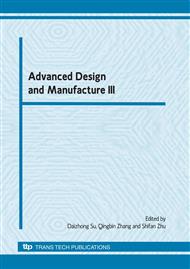p.552
p.556
p.560
p.564
p.568
p.572
p.577
p.581
p.585
Application and Benefits of the Virtual Reality Technique for Product Conceptual Design
Abstract:
Selecting a right way to display the conceptual design results is an important issue for designers. This study evaluated three common computerized visual presentation methods for demonstrating the conceptual ideas of product designs. They are pictures, animations, and image-based VR. After evaluations, this study found that the image-based VR reached the best results of getting the ideas of the conceptual design. It is therefore suggested to use the image-based VR approach if designers wish to receive the most possible advices and feedback, especially in restricted presenting time. The image-based VR approach will help users understand many aspects and considerations of the designer’s conceptual ideas more easily and quickly.
Info:
Periodical:
Pages:
568-571
Citation:
Online since:
November 2010
Price:
Сopyright:
© 2011 Trans Tech Publications Ltd. All Rights Reserved
Share:
Citation:


